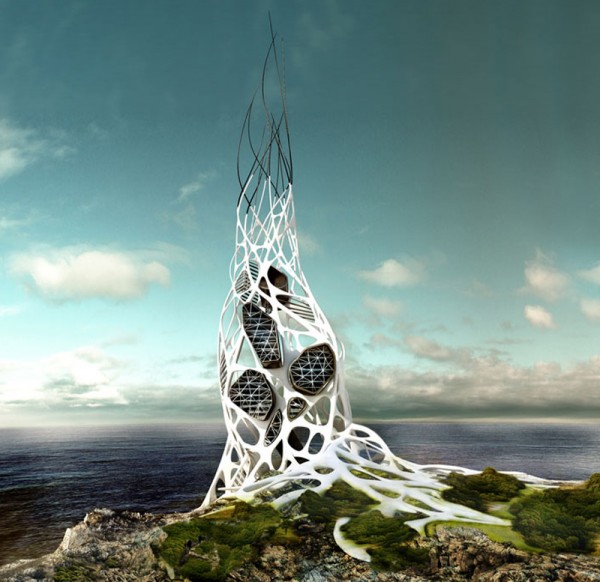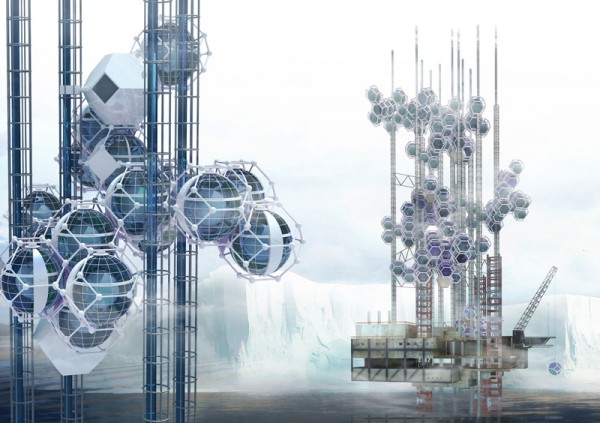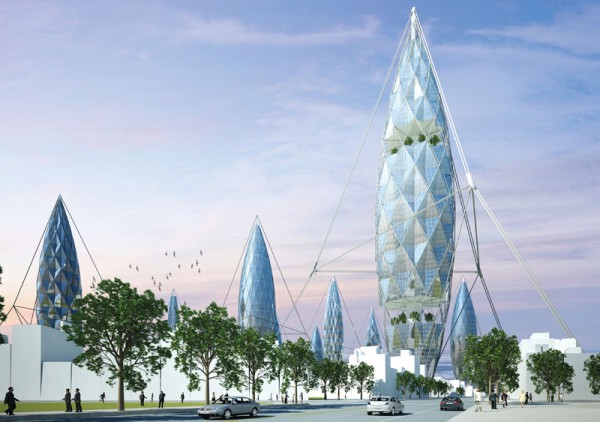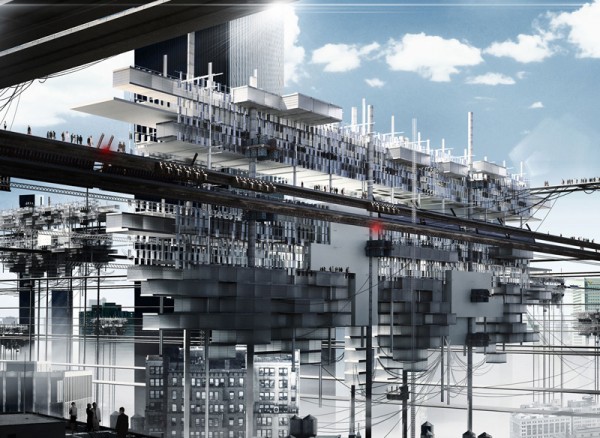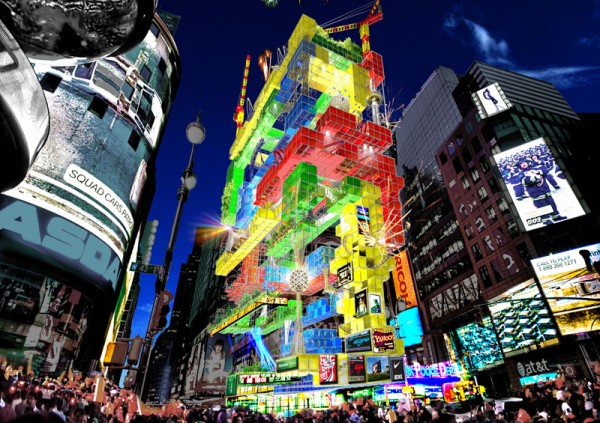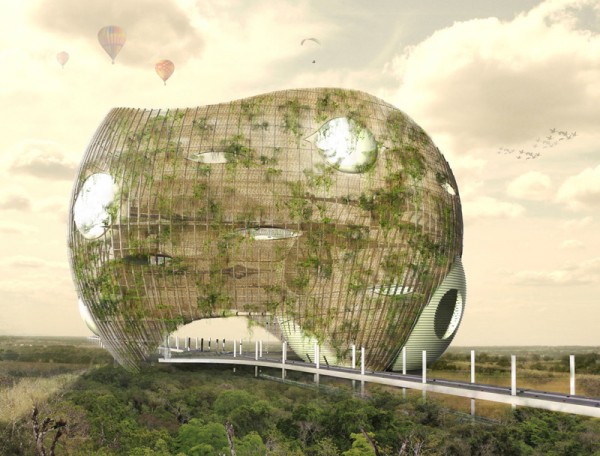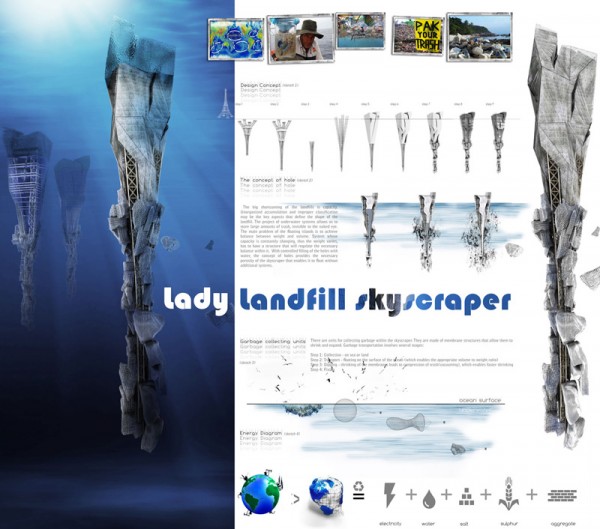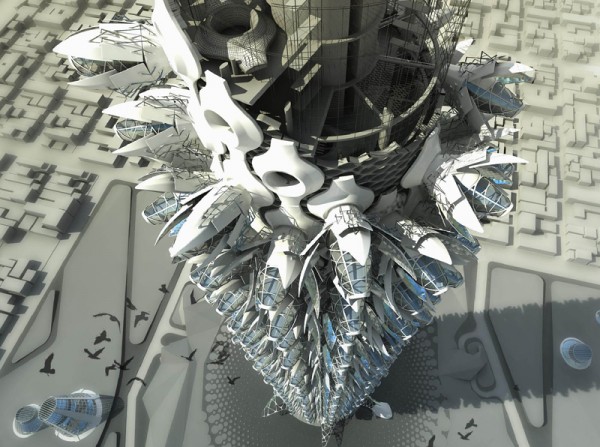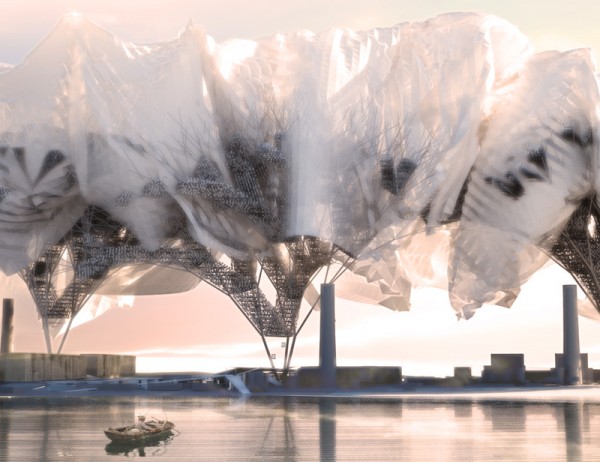Honorable Mention
2011 Skyscraper Competition
Milos Vlastic, Vuk Djordjevic, Ana Lazovic, Milica Stankovic
Serbia
Hydra is a skyscraper that investigates the possibility of creating a power plant that uses hydrogen as source of energy. The international community recognizes hydrogen as a key component of sustainable energy system for the transportation, industrial, residential, and commercial sectors. The power is produced through electrolysis and could be stored in batteries and transported by truck, pipes or cables. Another interesting part is that the by-product of the process is clean water.
Its exoskeleton is built from grapheme, the basic structural element of carbon allotropes such as graphite and carbon. Grapheme has a high thermal and electric conductivity and is two hundred times stronger than steel. The idea for the Hydra skyscraper is to harvest energy from lightning storms and store the power in several mega-batteries located at the base. The project also includes a research facility, housing, and recreational areas for scientists and their families. Read the rest of this entry »

